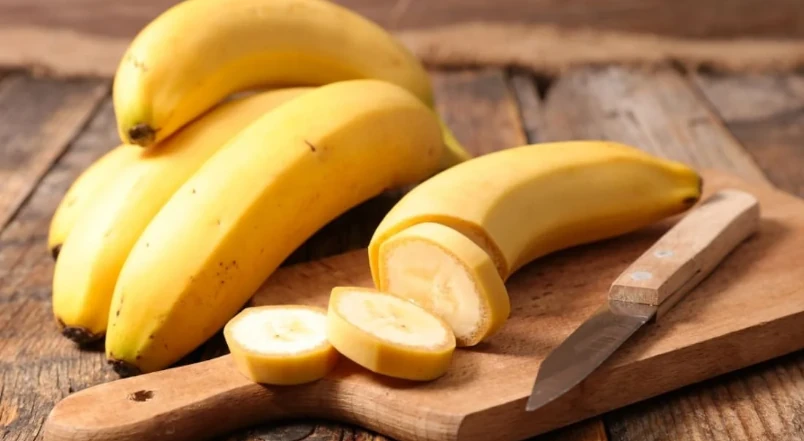Introduction
Antioxidants are molecules necessary for the protection of the body against certain catabolites produced during cellular respiration : free radicals .
Excess of Exogens
The exogenous antioxidants taken with the diet are very useful in preventing/obstructing cellular aging processes , depression of the immune system and the onset of diseases or tumors.
Often the exogenous antioxidants in the diet are not sufficient to cover the needs of the subject; in this case, it is important that their intake is increased through the so-called ” antioxidant foods ” or antioxidant-based food supplements … BUT IF THERE WERE TOO MANY?
- In general, when present in the right concentrations, free radicals are fundamental for cellular homeostasis , since they act as real and proper messengers essential for the correct metabolism of the cell (they play, for example, a fundamental role in the processes of killing and digestion intracellular pathogens by macrophages and granulocytes ).
- Consequently, by neutralizing an excessive amount of free radicals through the immoderate intake of antioxidants, one runs the risk of disturbing the normal cellular metabolic balance, endangering the health of the entire organism.
- Until a few years ago, the US Department of Agriculture recommended consuming between 3,000 and 5,000 ORAC units per day in the diet, which can be achieved by consuming about five portions of fruit and vegetables . As a precautionary measure, it could therefore be suggested that any supplementation of antioxidants should not exceed 5,000 ORAC units per daily dose, which will be added to those provided by the normal diet. Recently, the ORAC method for estimating antioxidant capacity has been deprecated due to the poor in vivo reproducibility of its results.
Selenium
Function and food sources : Selenium is a major component of the endogenous antioxidant glutathione peroxidase (GSHpx) and the selenium-dependent phospholipid-hydroperoxide-glutathione-peroxidase – pH-ESHPX-Se (Levander, 1987; Neve, 1989; Burk, 1991 ); the latter catalyzes the degradation of the hydroperoxides formed by oxidation of the polyunsaturated fatty acids of the cell membrane and hinders the prostacyclin synthetase enzyme which favors the formation of pro-inflammatory molecules (Wolffran et al. , 1989, Guidi et al. , 1984; Schiavon et al. , 1984). Foods _ which bring greater quantities of selenium are fish and offal , meat and cereals , dairy products; its recommended ration is not easily estimated but the EEC recommends an average intake of 40µg/day.
EXCESS of antioxidant selenium and recommended rations : excess of selenium can cause even serious intoxications ; in the USA there have been cases of excess selenium due to out-of-control dietary supplementation . The subjects had regularly taken bars containing 27.3 mg of this microelement, exponentially exceeding the recommended ration; in this case the following occurred: nausea, vomiting , diarrhea , abdominal cramps , hair loss , nail fragility and peripheral neuropathy (Helzsouer et al ., 1985).
In addition to the intoxication due to short-term excessive integrations, even the prolonged intake of 3-7mg/day of selenium seems to cause adverse reactions such as: bullous dermatitis , nail alterations, alopecia and neurological anomalies ( paresthesias , paralysis and hemiplegia ) (Yang et al ., 1983)
Other studies show that even just 0.7-0.9mg/day of selenium determines an excess of this antioxidant related to specific disorders and symptoms (Yang et al. , 1989), therefore, it is recommended not to take more than 450 µg/day. die (Commission of the European Communities, 1993).
Zinc
Function and food sources : zinc is a very important enzymatic factor, participates in the maturation of immune cells , stabilizes some hormonal proteins , is important for the formation of bones and muscles and has a very important antioxidant action. Zinc is found in meat, eggs , fish , milk and cereals.
EXCESS of antioxidant zinc and recommended rations : the recommended rations of zinc are not known but if deficient it proves to be an essential nutrient. Excess zinc, in doses higher than 2g/day, becomes toxic and causes nausea, vomiting and fever (Hambridge et al. , 1986); moreover, the prolonged intake of doses equal to or higher than 75-300 mg/day can induce alterations: of the metabolism of copper and iron (impairment of the synthesis of leukocytes and erythrocytes ), and of the absorption of calcium and magnesium (with probable bone compromise).
Copper
Function and food sources : copper is an enzymatic component of endogenous antioxidants and participates in cellular energy processes as well as in the synthesis of connective tissue, nail and hair keratin and some neuro-active peptides . Copper is found in liver , kidney , shellfish and some fruits .
EXCESS of copper antioxidant and recommended rations : there are no known cases of copper poisoning, except for accidental ingestion of contaminating products. The tolerated dose with food is about 35mg/day but the Commission of the European Communities suggests not to exceed 10mg/day.
Vit. A and carotenoids
Function and food sources : for vit. A means both the vit. fat-soluble retinoids (and analogues), both vit. fat-soluble carotenoids (including lycopene, astaxanthin, etc.). Between the two groups, those with the greatest antioxidant function are certainly carotenoids, especially β- carotene , while retinol and analogues are mainly involved in the mechanism of vision and in cellular differentiation. Retinoids are mainly contained in animal-type foods (liver and milk derivatives), while carotenoids are best represented in the VIth of the 7 basic food groups ( lycopene especially in tomato [but not only! ] and astaxanthin in crustaceans or some fish that feed on them).
EXCESS of vit. A and antioxidant carotenoids and recommended rations : The recommended ration of these vitamins and provitamins is evaluated according to the criterion of retinol equivalence ( 1 RE = 1 µg of retinol = 6 µg of β-carotene = 12 µg of other carotenoids ) and ranges from 350 to 700 µg RE/day. The acute excess of retinoids occurs with doses reaching 300mg/day while, in the long term, it mainly depends on the exceeding of the hepatic storage capacity; it is advisable not to exceed single doses of 120mg/day or in any case to maintain doses of prolonged supplementation between 7.5 and 9mg/day (Bauernfeind, 1980; Commission of the European Communities, 1993). In the woman in pregnancy doses of retinoids equal to 6mg/day become risky and can cause a teratogenic effect on the fetus , or malformations of the unborn child; on the contrary, carotenoids do not show any side effects other than an “orange” hyper-pigmentation of the skin .
Vitamin C
Function and food sources : vitamin C (or L-ascorbic acid ) is a water-soluble vitamin that performs numerous functions: enzymatic factor, responsible for collagen synthesis, cellular defense, protection of vitamin E, reduction of folic acid in its coenzymes and reduction of 3+ iron to 2+ iron. The vitamin C is contained above all in the plants of the VIIth of the 7 fundamental food groups and its recommended ration varies between 60 and 90 mg/day.
EXCESS of antioxidant vitamin C and recommended rations : excess of vitamin C (> 500mg/day) increases the excretion of oxalates in the urine and decreases the solubility of uric acid ; moreover, a possible pro-oxidant effect induced by “megadoses” of the vitamin itself has recently been observed (Chen Q. et al, 2008); intakes >10g/day, in addition to the effects mentioned above, cause gastrointestinal disturbances (probably triggered by the alteration of the pH) and favor the formation of kidney stones (Flodin, 1988).
Lives
Function and food sources : the vit. E (or tocopherol) is a vit. fat-soluble which includes 8 vitamin forms all different on the basis of metabolic effectiveness; therefore, the concentrations and nutritional requirements of vitamin E are expressed in Tocopherol Equivalents or international units: 1 Tocopherol Equivalent = 1 mg a-tocopherol = 1.5 IU = 2 mg βŸ -tocopherol = 3 mg δ- tocotrienol = 10 mg γ -tocopherol. The vitamin And it prevents the oxidation of polyunsaturated fatty acids ( PUFA ) to which it can bind as structural elements . They are rich in vitamins. And the oilseeds , the cereal germ and related oils.
EXCESS of vit. E antioxidant and recommended rations : the optimal intake of vit. E is equal to 0.4 TE per gram of PUFA, therefore about 8mg/day; the toxicity induced by the excess of vit. And it is very difficult to obtain even by means of pharmacological administrations; these are intestinal symptoms that can be obtained with megadoses of at least 2,000mg/day (Bendich & Machlin, 1988) which in any case do not show metabolic alterations of any kind.
Coenzyme Q-10
Function and food sources : coenzyme Q-10 or ubiquinone regulates energy metabolism and is a powerful mitochondrial antioxidant , the concentration of which tends to decrease with ageing; the integration of coenzyme Q-10 is useful in mitochondrial myopathies, in the prevention or adjuvant of anti- cancer therapies , in the treatment of neurodegenerative diseases and in migraine . Dietary coenzyme Q-10 is present in meat and fatty fish , but is mostly synthesized endogenously by joining: Acetyl-coenzyme A to a benzoic ring (derived from tyrosine) and to more side methyl groups (derived from methionine ).
EXCESS of antioxidant coenzyme Q-10 and recommended rations : coenzyme Q-10 does not have a recommended ration since most of it is produced endogenously; however, when used in the above therapies the range of administration is between 10 and 90mg. N.B. _ coenzyme Q-10 is inactivated by some drugs such as statins to lower cholesterol and therefore may require dietary supplementation. An excess of coenzyme Q-10 does not cause real poisoning; the few symptoms highlighted are non-specific and of slight entity: inappetence, gastro-intestinal disturbances, nausea and vomiting .
Lipoic acid
Function and food sources : lipoic acid is a fat-soluble molecule with functions of: energy coenzyme of fatty acids and carbohydrates, antioxidant capable of blocking hydroxyl radicals, hypochlorous and singlet oxygen, and chelator of excess heavy metals . N.B. _ Lipoic acid works in synergy with dihydrolipoic acid. Lipoic acid is mainly contained in red meat .
EXCESS of antioxidant lipoic acid and recommended rations : the dietary intake of lipoic acid should be 25-50mg/day and the pharmacological excess has been observed in various animal species; in humans, referring to a subject of average build (about 70kg in weight ), the excessive dose corresponds to about 30-35g/day. Following excessive administration of lipoic acid, no serious symptoms appear and ONLY in the hypersensitive can skin manifestations of an allergic type and gastric disturbances arise; it does not seem to have teratogenic effects but, in the absence of more detailed information, its use during pregnancy is NOT RECOMMENDED.
Bibliography
- Levels of Recommended Intake of Nutrients for the Italian population (LARN) – Italian Society of Human Nutrition (SINU).




